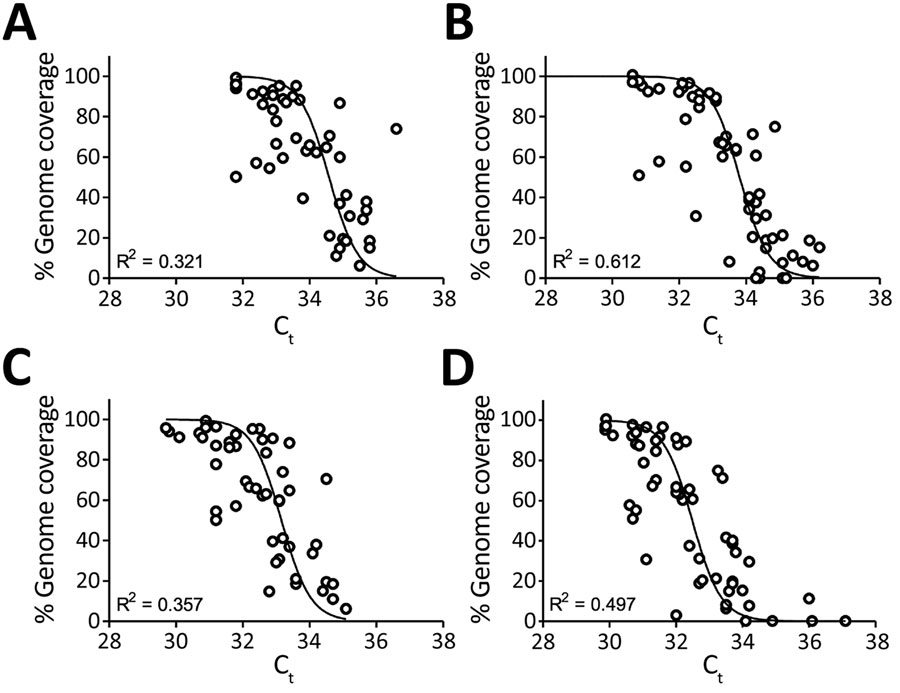Volume 27, Number 5—May 2021
Research
Monitoring SARS-CoV-2 Circulation and Diversity through Community Wastewater Sequencing, the Netherlands and Belgium
Figure 1

Figure 1. Quantitative reverse transcription PCR Ct of severe acute respiratory syndrome coronavirus 2 RNA in sewage samples as determined by N gene (N1–N3) and E gene assays against the percentage of genome covered (>10×) by nanopore reads, the Netherlands and Belgium. A) N1 gene; B) N2 gene; C) N3 gene; D) E gene. Ct, cycle threshold.
1These senior authors contributed equally to this article.
Page created: March 02, 2021
Page updated: April 20, 2021
Page reviewed: April 20, 2021
The conclusions, findings, and opinions expressed by authors contributing to this journal do not necessarily reflect the official position of the U.S. Department of Health and Human Services, the Public Health Service, the Centers for Disease Control and Prevention, or the authors' affiliated institutions. Use of trade names is for identification only and does not imply endorsement by any of the groups named above.